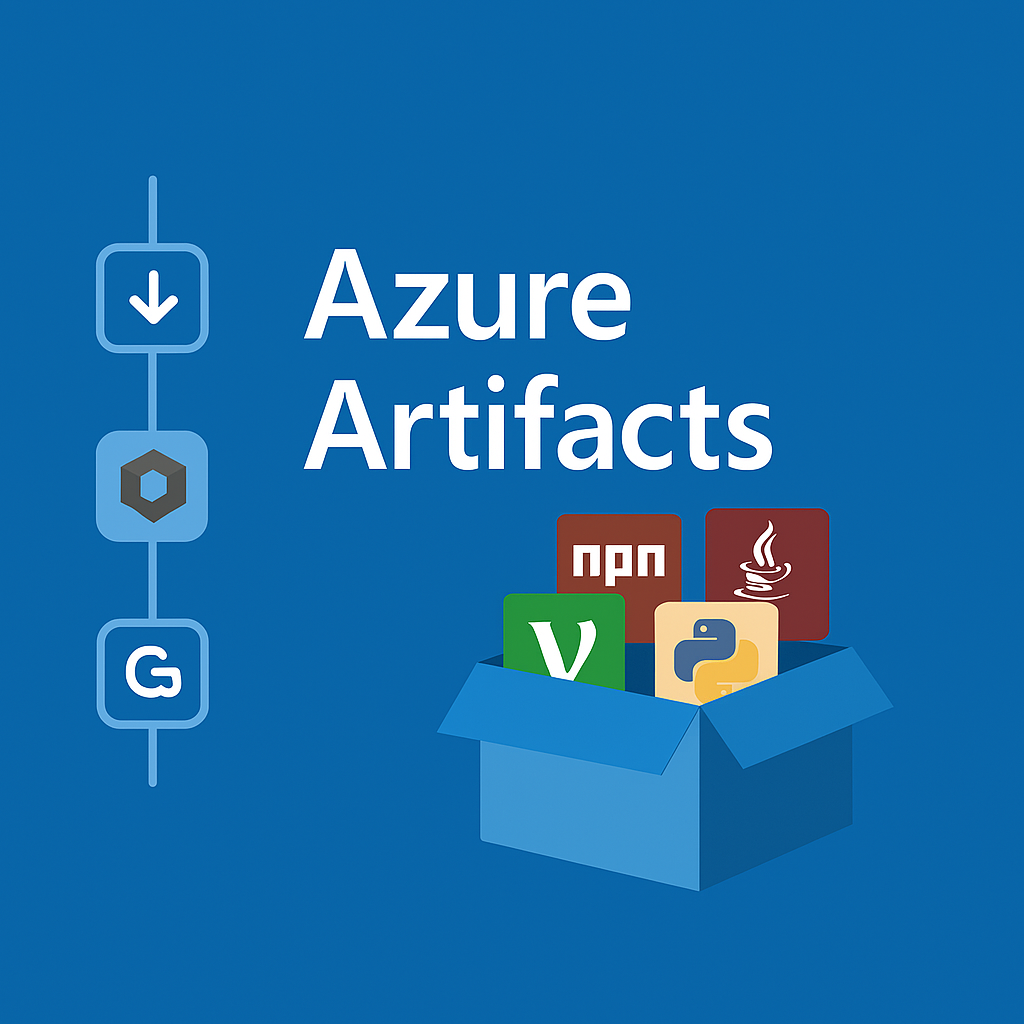Introduction to Azure Artifacts
Introduction to Azure Artifacts
Azure Artifacts is a service within Azure DevOps that provides a secure, scalable way to host and share packages, enabling efficient dependency management for your projects.
What is Azure Artifacts?
Azure Artifacts allows you to create feeds to publish and consume different package types—such as NuGet, npm, Maven, Python, and Universal Packages. These feeds can be scoped to individuals, teams, or the entire organization, ensuring only the right people have access to the right packages.
- Centralized Package Management: Store and manage packages in a single location.
- Version Control Integration: Track versions of libraries as code evolves.
- Visibility & Governance: Set permissions, deprecate older versions, and enforce policies.
- Seamless CI/CD: Automate building, publishing, and consuming packages via pipelines.

Overview of Azure Artifacts in Azure DevOps
Key Features
- Package Feeds: Create private or public feeds to store and share libraries within your organization.
- Multi-format Support: Manage a variety of package types, ensuring consistency across multiple tech stacks.
- Seamless Integration: Works closely with Azure Pipelines, enabling automated builds, deployments, and artifact management.
- Version & Retention Management: Control package versions, deprecate outdated libraries, and define retention policies to clean up old artifacts.
Why Use Azure Artifacts?
Centralizing package storage and sharing through Azure Artifacts provides:
- Dependency Control: Ensure each project consistently uses the correct package versions.
- Security & Compliance: Restrict feed access, track usage, and enforce enterprise guidelines.
- Collaboration: Share internal libraries easily among distributed teams without publishing them publicly.
- Reduced Downtime: Cache external packages to prevent build failures when external repositories are down.
Basic Workflow
- Create a Feed: In Azure DevOps, navigate to Artifacts and create a new feed.
- Publish Packages: Configure your build pipelines to push packages (e.g., NuGet, npm) to the feed after successful builds.
- Consume Packages: Update your projects to reference the feed, automatically retrieving the latest published versions.
- Manage Versions: Deprecate older releases, promote stable versions, and maintain a tidy dependency ecosystem.
Advanced Usage & Upstream Sources
In larger organizations or open-source projects, you may rely on a combination of internal and external dependencies. Azure Artifacts supports upstream sources, allowing you to **cache external packages** from sources like npmjs.com or nuget.org within your private feeds. This approach ensures:
- Reliable Builds: Build pipelines continue to function if external repositories are offline or throttled.
- Version Consistency: Lock down external versions, preventing unplanned upgrades.
- Compliance & Auditing: Track all external dependencies used across your codebase.
Upstream sources reduce risk by providing a local cache of external packages, improving build stability and enabling a single source of truth for dependencies.
Best Practices
- Separate Feeds: Maintain distinct feeds for production-ready and experimental packages.
- Lifecycle Policies: Automatically clean up outdated or unreferenced packages.
- Package Namespacing: Avoid conflicts by using clear, consistent naming conventions for packages.
- Security Scanning: Integrate vulnerability scanning tools in your pipelines to detect and block insecure packages.
- Upstream Sources: Configure upstreams for npmjs, NuGet.org, or other external repositories to cache external libraries locally.
Conclusion
Azure Artifacts centralizes package management, ensuring consistent dependency versions and streamlined collaboration across multiple teams and technologies. By leveraging feeds, automation, upstream sources, and policy management, organizations can maintain a secure, reliable package ecosystem.
The next step is to explore Managing NuGet, npm, Maven Packages for a deeper dive into specific package formats and how to utilize them effectively in Azure DevOps.